Review and photographs by Loon, edited by Suspsy.
Ever since it was discovered by Francis Tully in 1955, Tullimonstrum has both intrigued and confused. The animal’s common name, “Tully Monster,” is a reference to its confusing collection of body parts. With its bizarre appendage ending in a claw-like mouth and simple eyes at the end of stalks, this doesn’t look like anything alive today. Because of this, there isn’t a consensus on what this animal is. Some experts think it’s an invertebrate and some think it’s a vertebrate, being closely related to lampreys. Paleo-Creatures has created their model of Tullimonstrum based on the latter understanding, as stated on the included info card.
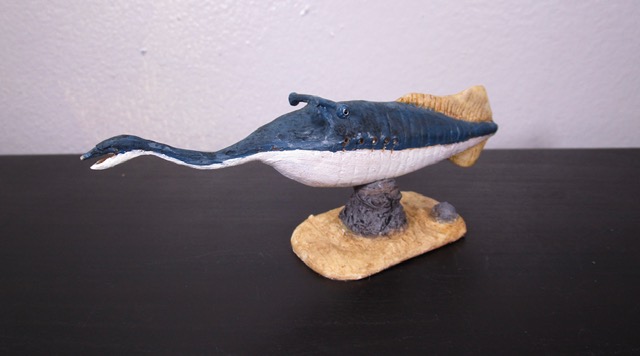
This figure isn’t particularly large, but it doesn’t need to be; at about 5 ½” {13 ½ cm), this figure is already 1/3 scale. Despite a small size, there’s a lot of nice sculpt work going on. All of the bizarre features that have made the Tully Monster infamous are present. The weird, limb-like appendage is accurately extending from the front of the animal. However, the teeth inside of its claw-like mouth are absent, most likely because they would most likely be too small and too fragile at this scale.
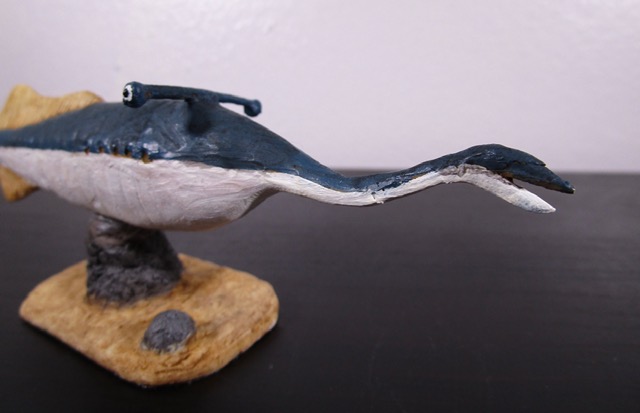
Just when you thought it couldn’t get any weirder, we reach the eyes. They’re very simple on this figure, which is accurate given that Tullimonstrum didn’t seem to have the most advanced eyes. The eye stalks themselves form a bar that sits atop the body, which is accurate to some reconstructions.
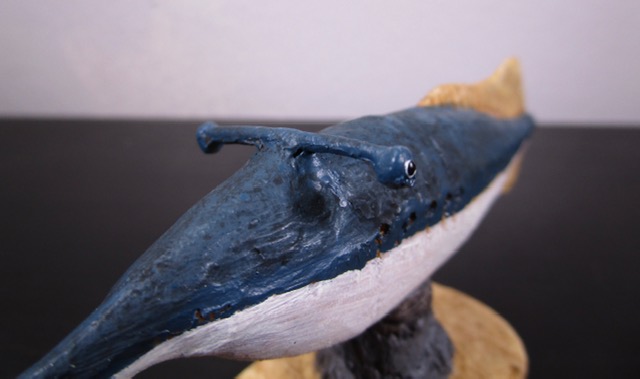
Looking at the rest of the body, you could easily see why some researchers think this animal is related to fish. The end of the body has a pair of “fins,” but the presence of true fins may be up for debate, as the fossil is thought to have been poorly preserved. Along the side of the body, there are small, circular openings, reminiscent of the gills of lampreys. Tullimonstrum is thought to have had structures like this, though it is unknown what their function was.
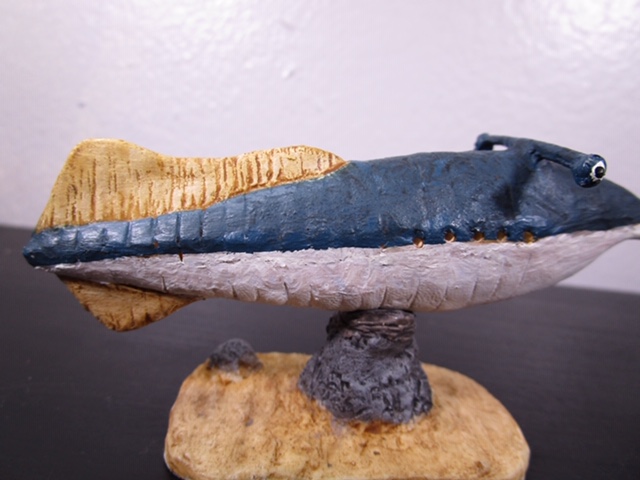
Like all Paleo-Creatures figures, this model includes a base, which is good as it would hard to have this figure ”stand” on its own. It’s a simple, flat patch of sand with two rocks. The detail on this base is quite good, particularly on the sand, which has a nice texture and some very realistic paintwork.
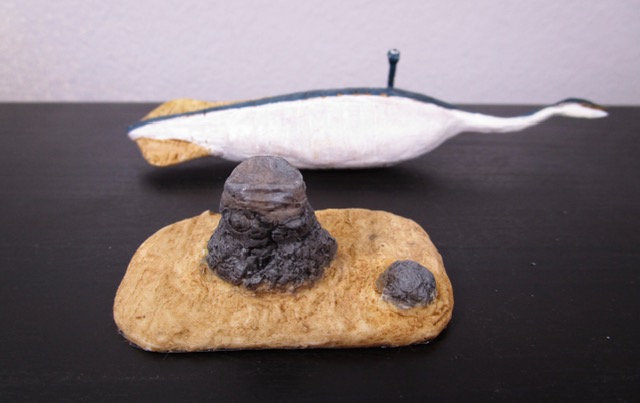
While there is some slop here and there, the figure itself is well-painted. The blue and white halves of the body are reminiscent of the coloration of some fish, as well as the yellow on the ventral “fins.” Combined with the holes on the side of the body, they give the figure the look of some incomprehensible submersible.
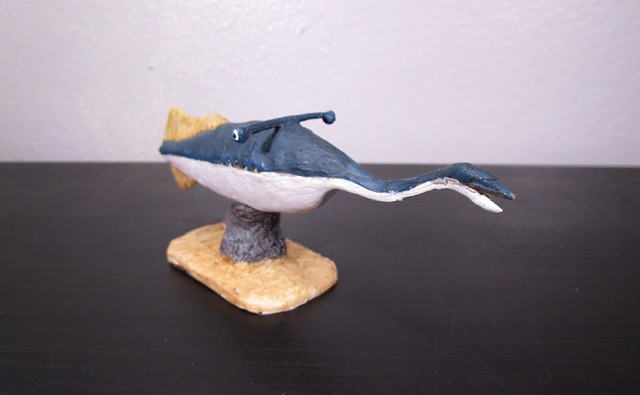
Even if we still don’t know what the Tully Monster was, or what certain parts of it did, this figure is a really good representation of this mysterious creature.
Disclaimer: links to Ebay and Amazon on the DinoToyBlog are affiliate links, so we make a small commission if you use them. Thanks for supporting us!




Wow, this is amazing!! Any chance that this figure will be back? It seems to have disappear for good 🙁
What and odd creature. I totally forgot he made one for the line. Good review.
Thank you, and I’m very happy Jetoar made this. I can always count on him to deliver an odd or obscure species.